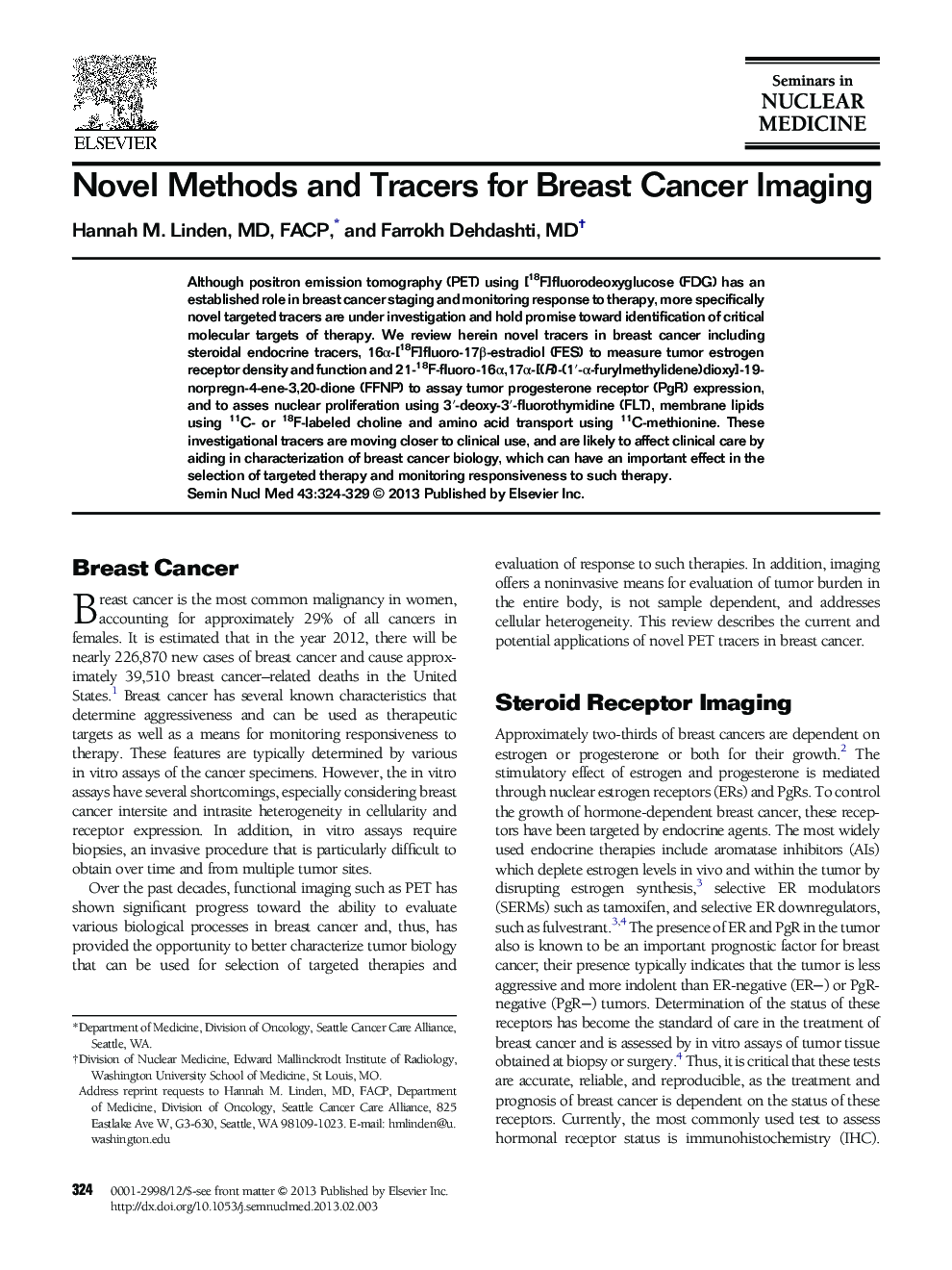| Article ID | Journal | Published Year | Pages | File Type |
|---|---|---|---|---|
| 4251108 | Seminars in Nuclear Medicine | 2013 | 6 Pages |
Abstract
Although positron emission tomography (PET) using [18F]fluorodeoxyglucose (FDG) has an established role in breast cancer staging and monitoring response to therapy, more specifically novel targeted tracers are under investigation and hold promise toward identification of critical molecular targets of therapy. We review herein novel tracers in breast cancer including steroidal endocrine tracers, 16α-[18F]fluoro-17β-estradiol (FES) to measure tumor estrogen receptor density and function and 21-18F-fluoro-16α,17α-[(R)-(1â²-α-furylmethylidene)dioxy]-19-norpregn-4-ene-3,20-dione (FFNP) to assay tumor progesterone receptor (PgR) expression, and to asses nuclear proliferation using 3â²-deoxy-3â²-fluorothymidine (FLT), membrane lipids using 11C- or 18F-labeled choline and amino acid transport using 11C-methionine. These investigational tracers are moving closer to clinical use, and are likely to affect clinical care by aiding in characterization of breast cancer biology, which can have an important effect in the selection of targeted therapy and monitoring responsiveness to such therapy.
Related Topics
Health Sciences
Medicine and Dentistry
Radiology and Imaging
Authors
Hannah M. MD, FACP, Farrokh MD,
